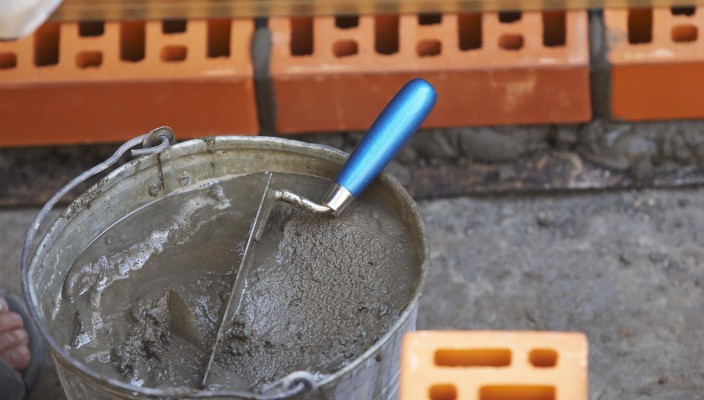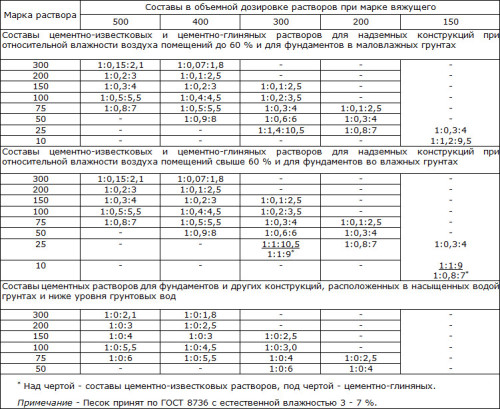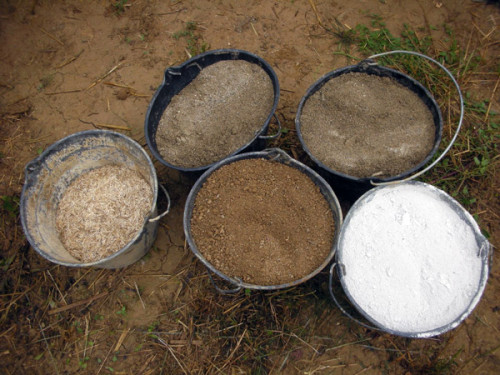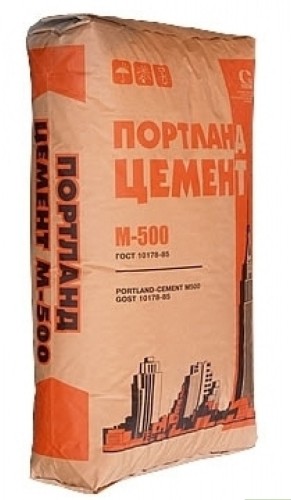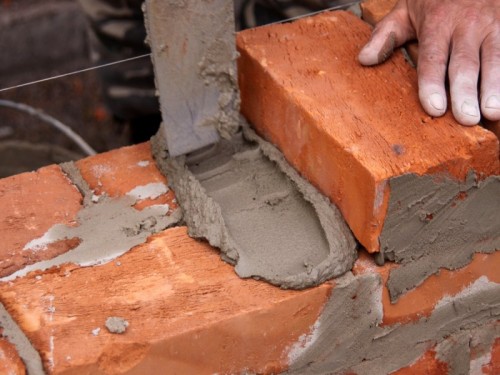A solution is constantly used in construction, so it is worth considering its types, properties and methods of preparation. Only in the presence of all components and maintenance of proportions, a reliable mixture is obtained, suitable according to the characteristics for certain works.
Content
The main component of any mixture is cement, for its preparation use limestone and clay. They are subjected to firing in the furnaces under high temperature, the clinker receives at the exit. Next, these granules are molded in the ball mills, two-wheel gypsums are added. So get a unique material capable of replacing many materials.
Properties and types of mixtures
The use of cement and mixtures based on it is unlimited, monolithic and prefabricated construction is impossible without it. When choosing a type of material, they look at its properties, the main of them:
- the thinness of the grinding is responsible for the timing of setting the cement mortar, affects the strength of concrete. Cement particles must be sufficiently small for the formation of bonds and their preservation when mixing the solution;
- frost resistance is the ability to withstand a certain number of cycles of alternate freezing and thawing. To obtain this characteristic, additives are brought to the mixture, then the cement becomes hydrophobic;
- for sealing of seams in hydraulic equipment, a waterproof expanding cement is used. Then the gripping process takes about 10 minutes, while during hardening cement increases in volume;
- corrosion resistance required when erecting underwater and underground structures. This property has a Pozzolane cement;
- sulfate resistance is required when arranged designs in an aggressive medium, for example, in salt water. Therefore, experts have developed a sulfate-resistant cement for hydraulic structures.
Marks of solutions
There is also a division by brands. Theoretically, the digit of the solution used must coincide with the selected material. For example, if the M100 brick is used, then to obtain a reliable clutch of the elements, the masonry must be built with a brand 100 solution. But not always the data coincide, if the M350 is presented, the mixture of the brand 150 is also suitable, so it is necessary to take into account all the nuances of the process.
If light building blocks use, then usually take a solution M100. This applies to such material as a sewer, slagoblock. And for boob bricks, a mixture of M100 is used.
Before making a cement solution of a certain brand, a simple calculation is carried out, it depends on the material acquired. If a solution of the M100 brand is required in the presence of cement M400, the mixture is prepared with a proportion of 1: 4. That is, on 1 part of the binder take 4 parts of the sand. Elasticity of the solution gives detergent, it is made in small quantities, for 1 cement bucket there are 50-100 grams of substances. That is, to get the value of the brand of the future solution, it is necessary to divide the binding brand on the amount of sand.
During the preparation of the cement mortar, it is important to take into account the appointment of the future mixture, from this there is consumption of materials. Adopted norms and proportions for cement mortar can be viewed in the table below:
Decorative characteristics
Sometimes cement-sandy solution with decorative properties is required. So, contrasting seams in brickwork look attractive, create a clear selection. Basically, the dimming is required, then they use soot or graphite. It affects the quality of the finished seams, they lose their strength. Therefore, to enter such a dye stands in small quantities, extremely neat. The seams will be brightened with time, as the additive is washed off with rains and burns out in the sun.
There is also another variation of the solution by increasing the amount of cement - it increases the brand of finished material. You can also simply choose a dark cement, for example, Balacaleevsky SPCIII / BC-400.
Preparation of solution
After determining the purpose of the mixture, all components are prepared, it will be needed from the materials:
- binder (cement);
- aggregate (sand);
- water;
- plasticizer.
There is a common algorithm for the preparation of cement mortar in concrete mixer. First, water is poured in an amount indicatively the corresponding part of the cement. But it can change, for example, if the sand takes wet. Therefore, professionals are recommended to pour a little less than the norm.
The second input component is the detergent, it is better to use a liquid soap or a gel for dishes. 50-100 grams are added to the concrete mixer. Then the tool is well dissolved and sufficient foaming will occur. Include a concrete mixer for 3-5 minutes. If it is washing to add at the end of the knead, it is formed little foam, respectively, elasticity will not increase.
The next sand is falling asleep, but not all portion, but half. For example, during the injection of the M100 solution, when using the grade 400 cement, only 2 parts from the total number are introduced. Then the entire necessary cement is falling asleep, which is mixed into the total mass in the concrete mixer in a few minutes. Then the remaining sand is already falling asleep. All ingredients must completely dissolve in water, while the homogeneous mass is obtained.
If necessary, adjust the density of the solution, which is added to the missing ingredient. The finished solution should be smeared within 3-5 minutes.
The consistency of the high-quality cement mortar must correspond to the shop sour cream. For samples put a point on the surface of the cooked material, it should not be blown up.
When mixing the cement-mortar technology changes - first blended cement with sand, is introduced lime, quicklime in water. Then the water in the amount to obtain the necessary consistency.
Requirements for components
To prepare a cement mortem with your own hands with the necessary characteristics, all components must meet certain requirements. Therefore, it is worth considering the composition in order:
- water can not have mud impurities, especially fats or oils. But strictly attitude to the composition of the liquid is maintained only during the construction of particularly important objects. In civil engineering, water from water supply, sometimes wells or wells;
- as a plasticizer, detergent is used, it increases elasticity. It may be shampoo, washing powder or soap. The main thing is to monitor the amount of the fund added, because the formed foam subsequently affects the strength of the solution;
- sand should use river - it is washed, without clay impurities. This is important because empties are obtained in the presence of clay compounds. Over time, clay leaves out, washed with precipitates, respectively, the seam is not durable. The presence of clay in the sand is determined visually in color - it is better to choose a white aggregate;
- cement is worth buying from a proven supplier. The entered material is not suitable for responsible work, since over time its properties are lost. Sometimes due to weak bonds, the cement consumption is doubled - this happens due to unscrupulous manufacturers.
Negative temperatures
With the onset of cold weather, work does not stop, but there are nuances in the process. As for the preparation of materials, the characteristics of the cement mortar can deteriorate significantly at a negative temperature. The reading mark is considered -5̊. Then the aid come to the rescue additives.
With a strong decrease in temperature, an alkaline salt is introduced into the composition of the brick masonry - Potash. Its cost is small, while the mixture has the necessary properties for work.
During the preparation of a cement masonry solution, it is trying to use heated water, then the detergent is better dissolved in it, the elasticity of the material will improve accordingly. In addition to water, the sand is heated, in the open space, it can frozen due to the presence of moisture in the total mass. Therefore, at construction sites in the cold regions, it is entered into heated premises or heated.
Of course, there are anti-corrosive additives. But it is important to know proven substances, because the market may offer low-quality products. To check it is to dilute a small amount of additive in water, leave for some time in the cold. Then check the water - if it frozen, then it is useless to bring it into the cement mortar.

